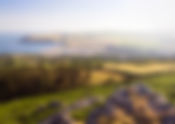SEARCH RESULTS
112 results found for "native hedge packs"
- Choosing Native Hedging
There are a number of benefits that come with planting a native hedge, with uses ranging from year-round Reasons to plant a native hedge Year-round beauty No matter the season, a hedge provides stunning visuals Our Top Native Hedging 1. This hardy plant is often found in woodlands and is a popular choice for mixed native hedging. See all native hedging >> See all hedging >>
- Yew Hedging - Planting & Care Guide
Yew hedges are a popular choice for gardeners looking for a low-maintenance, evergreen hedge that can Space the plants about 30-45cm apart to form a dense hedge. Watering: Water your yew hedge regularly during the first year to help establish the roots. Prune your yew hedge in late summer to maintain its shape and size. Regularly inspect your yew hedge for signs of pests or disease and treat as necessary.
- Special Hedging Mixes Inspectors Like: A Farmer’s Guide to Native Species That Tick Every Box
Why native diversity matters — and how to build a hedge mix that fits BN7 and BN11 Countryside Stewardship consistently favour mixes that show thought, diversity, and good use of native species . Benefits: Flowers packed with nectar; black berries for birds. packs are pre-designed to meet these ratios We can produce: BN7 (gapping-up) hedge packs BN11 (new hedges) packs Custom species mixes based on soil
- Choosing the Right Hedging for Privacy: A Comprehensive Guide
Creating a private sanctuary in your outdoor space is achievable with the right choice of hedging plants This guide will help you navigate the options to find the perfect hedging for your privacy needs. Factors to Consider When Choosing Hedging Plants: Evergreen vs. Note: Tolerates shade and is suitable for formal hedges. Note: Tolerates a range of soil types and is suitable for formal hedges.
- BN7 & BN11 Hedgerow Grants: A Farmer’s Guide to Gapping-Up and Planting New Hedges
are effectively creating a new hedge line Always planted as a native hedge in a double staggered row Blossoms from hawthorn, blackthorn and native trees feed pollinators in spring. Typical ball-park figures per metre: Plants: £5–£7 Native hedge packs (hawthorn, blackthorn, hazel, Choosing Native Species and Working Out Plant Numbers For BN11 in England, all species must be UK native Common native hedge species include: Hawthorn (quickthorn) Blackthorn Hazel Field maple Dogwood Dog rose
- How to Plant a Countryside Stewardship Hedge (BN11 & BN7 Planting Guide)
forming a strong structure. ✔ 5–7 plants per metre This ensures density and good long-term shape. ✔ Native least four other native species for BN11. ✔ Plant between November and March This is the accepted bare-root Bowhayes Trees hedge packs are designed to meet these requirements automatically. 2. Bowhayes Trees can support your planting with: CS-compliant hedge packs Hedgerow trees Stakes, guards hedge packs or get in touch for tailored recommendations.
- Top Evergreen Hedging
Griselinia - The genus Griselinia consists of evergreen trees and shrubs native to New Zealand, Brazil Yew - The Yew is one of the three conifers native to Britain, the others being Scots Pine and Juniper An evergreen tree native to chalk downs in southern England; however, most parts of the tree are toxic Box - Common Box is native to the UK (mainly in the south). Shop Evergreen Hedging >> Shop All Hedging >>
- BN11 & BN7 Eligibility: Simple Farmer’s Guide to Countryside Stewardship Hedge Funding (2026)
must be planted between: 1 November – 31 March ✔ Native Species Only The hedge must use 100% native Planting ✔ Hedge is 20m+ ✔ Fully new hedge line ✔ Native species only ✔ Max 70% hawthorn ✔ Minimum If you’re planning a BN11 or BN7 hedge for winter 2025–26, Bowhayes Trees can help with: Native hedging packs compliant with CS rules Mixed-species hedge bundles Hedgerow trees Guards, canes, and accessories Friendly, practical advice tailored to your land When you’re ready, explore our hedge packs or move
- Exploring Bare Root Hedging
It is the most widely used native hedging plant, often used for stock-proof or mixed hedges, where it Dog Rose - Dog Rose is a native fast-growing shrubby hedging plant often used in mixed hedges. Mixed Hedge Packs - If you can't decide, or you want more of a variety in your hedges, we have collated a few carefully selected mixed hedge packs that are suitable for certain situations. See Mixed Hedge Packs >> When should I plant bare root hedging?
- Choosing the right photinia hedge for your garden
Photinia is a genus of shrubs and trees that are popular for their bright foliage and are often used for hedges a fast-growing shrub that can reach up to 4 meters tall and wide, making it an excellent choice for hedging Little Red Robin is an excellent choice for smaller gardens or as a low hedge. Each of these Photinia varieties have unique features that make them attractive choices for hedging and
- The Best Hedging for Coastal Areas
Hedging in coastal areas is often subject to quite harsh conditions. Which coastline hedging plants should I choose? Oleaster - An extremely hardy evergreen shrub, perfect for hedging in coastal sites. Box - Common Box is most popularly used for hedging and topiary. Shop all Hedging >>
- Seasonal Planting Tips for Trees, Hedging, Climbers, and Shrubs
This guide provides seasonal tips for planting and caring for trees, hedging, climbers, and shrubs to While planting is less common in summer due to heat stress, it's a good time to install evergreen hedging Bare-root hedging is best planted from late autumn to early winter. Pruning: Prune deciduous hedges in late winter or early spring before new growth begins. Evergreen hedges are best pruned in late spring or early summer.












